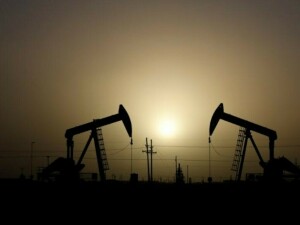The Pakistan Cotton Ginners' Association in its latest cotton arrival report has shown seed-cotton arrivals as on 1st January, 2008 equivalent of 9.114 million local weight bales falling short by 1.968 million bales (=21.59 percent) as compared to cotton arrivals same period last season.
Last season's cotton production stood at 12.4 million local weight bales and by applying the same percentage of 21.59 this season's total crop comes to 9.723 million local weight bales. If we convert the local weight bales giving average weight around 155 per bale into 170-Kg standard weight bales, it comes to 8.865 million bales (lowest in last years) against our initial target of 14.14 million 170-Kg bales whereas our annual domestic consumption is estimated around 15.5 million 170-Kg bales.
The annual average lint yield Pakistan obtained in 2004-2005 was highest at kgs 760 /hectare by obtaining 14.45 million bales on 3.23 million hectares. Last year lint yield was kgs 650/hectare but this season it has decreased to around kgs 464 per hectare. Against this Pakistan's performance, India produced record high crop in 2004-2005 and since then she has been producing record crops and in 2006-2007 she obtained the position of second largest cotton producing country of the world after China pushing down USA at third position and in 2007-2008 India is expecting a record high production of 31.0 million 170-kg bales. In terms of cotton productivity, India was far behind Pakistan only five / six years back at around kgs 330/hectare and in 2005-2006 its yield was kgs 472/hectare, kgs 519/hectare in 2006-2007 and kgs 570 per hectare in 2007-2008 season.
Next season, India may produce around 34-35 million 170 kg bales and our performance may be even poorer than this season as we have no choice but to sow this season's seed which has been infested and deteriorated by severe attack of Mealy Bug and Leaf Curl Virus on our cotton crop this season. How shameful our performance has been in cotton sector? In the article titled " India - A potential cotton producer" published in daily Business Recorder, Karachi on 31st. September, 1998, this analyst had written "India has lot of potential in increasing its production and productivity and the quality of lint cotton for which drastic changes in working conditions, system of ginning, marketing and produce handling are required".
These words have proved to be true on the recent performance of India in cotton production and productivity. In India, associations, organisations, institutions, government departments, banks, private companies concerning cotton growing, handling, financing and marketing are very seriously working for the promotion of cotton and the results are before us. Even private NGOs are also working for the promotion of cotton. It is quite interesting to note that Bt cotton varieties played double rolls; one of a hero in India in tremendously increasing its production and productivity and that of a villain in Pakistan in decreasing cotton production and productivity.
India adopted GMO technology, produced its own seed and every season used fresh original seed which helped in substantially increasing its production and yield to record high levels while Pakistan neither adopted GMO nor evolved its own seed but used Bt cottonseed smuggled from Australia and mostly from India which was neither original nor pure but two to four generations old and had lost its potential and resistance to pest attack.
Our government should appoint a broad based commission of experts to inquire into the causes of continuous decline in cotton production and productivity, pin point the responsibility for such poor performance, and suggest necessary measures to improve cotton production and productivity. Those found responsible for poor performance in cotton should be taken to task. Apparently, all responsibilities of cotton production and quality improvement squarely lies on the federal and provincial agriculture ministries. We all know that cotton is the backbone of Pakistan's economy as exports of cotton and cotton made products earn around 65 percent of our annual foreign exchange earnings.
Failure of our cotton crops would adversely affect Pakistan's major and most important industries related to cotton ginning, spinning, weaving, finishing, knitting and garment making in terms of lower export earnings, unemployment and negative effect on allied industries. Our textile industry is not so much efficient and viable as to make textile industry / business competitive and profitable consuming imported cotton. We have to produce raw cotton at least matching to our domestic requirements.
Already textile sector is not performing well of which there are host of reasons; mainly due to increasing cost of production and lower efficiency in performance.
Lint cotton prices in the local market were stud to firm on reports of lower crop. In the last working days, lint prices gained Rs 50 to 75 per maund when spinner-buyers showed their interest. Sindh style lint was selling between Rs 3.100 and 3,200 while that of Punjab at a premium of Rs 100 to between Rs 3,200 and Rs 3.300 per maund of 37.324 kgs ex-gin. Larger export-oriented textile mills are booking foreign cotton but some reports indicate closure of about 100 mills due to high cost of raw material and low off=take of yarn and textile goods. The closure of spinning units may increase on acute shortage of domestic cotton. Recent incident of assassination of Benazir Bhutto chairperson of Pakistan People Party and a renowned political leader of Pakistan and the incidents of looting, killing and destroying private as well as public property has caste adverse effects on Pakistan's economy.
Shortage and high prices of raw lint cotton and increasing cost of power, water, gas charges apart from financial cost are making textile industry uncompetitive in foreign market.
BR100
11,814
Increased By
90.4 (0.77%)
BR30
36,234
Increased By
874.6 (2.47%)
KSE100
113,247
Increased By
609 (0.54%)
KSE30
35,712
Increased By
253.6 (0.72%)
























Comments
Comments are closed.